Paleo Pie Crust with Cassava Flour
Crisp and flaky crust made with cassava and tapioca flours! Perfect for a sweet or savory pie!
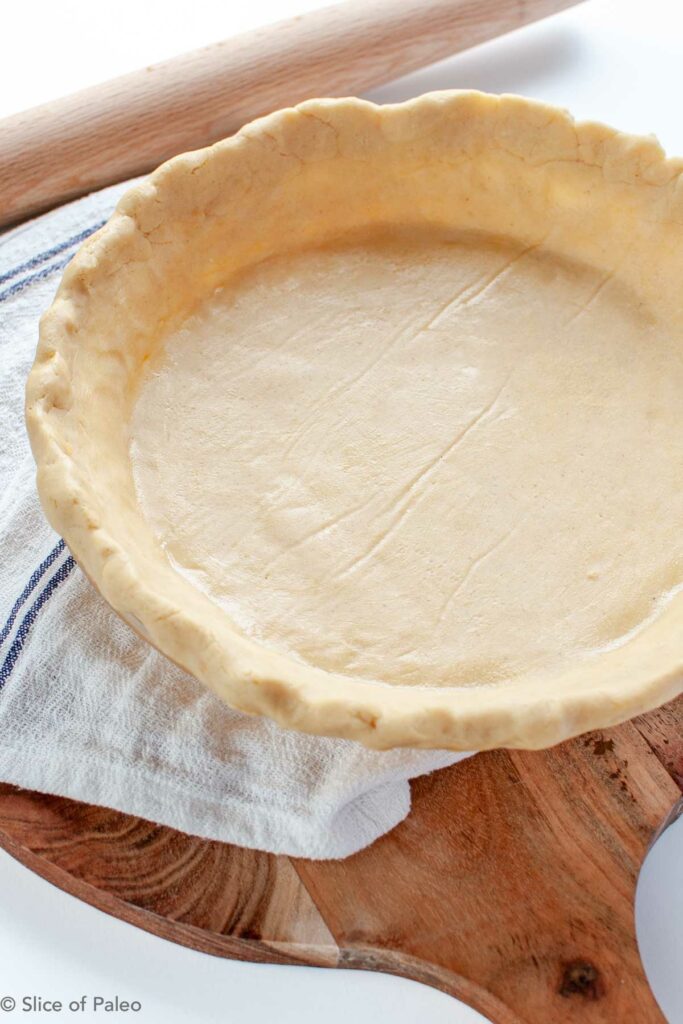
Whether you're making quiche or dessert, it's necessary to start with a good crust. A few stores now have gluten free crusts, but making your own ensures you know all the ingredients. This paleo pie crust is made with cassava and tapioca flours. It can be a great substitute for those with gluten or grain issues.
Some people prefer cassava flour and others prefer almond flour as a pie base. It's my plan to develop both! There are pros and cons to each. One pro for almond flour is that it's cheaper than cassava. A pro for cassava flour is that it has less calories. And then there is flavor, though I find that both work well and taste wonderful in different scenarios.
How to Make Paleo Pie Crust with Cassava Flour
Gather your ingredients, which includes cassava flour, tapioca flour, baking powder, salt, and coconut sugar for sweet pies. You can eliminate the coconut sugar for a savory pie. The wet ingredients includes palm shortening, eggs, apple cider vinegar, and cold water.
Look for sustainably sourced palm shortening which is available in many stores as well as whole food stores. The palm shortening will give the crust a nice flaky texture. The addition of a small amount of apple cider vinegar also improves the flakiness.
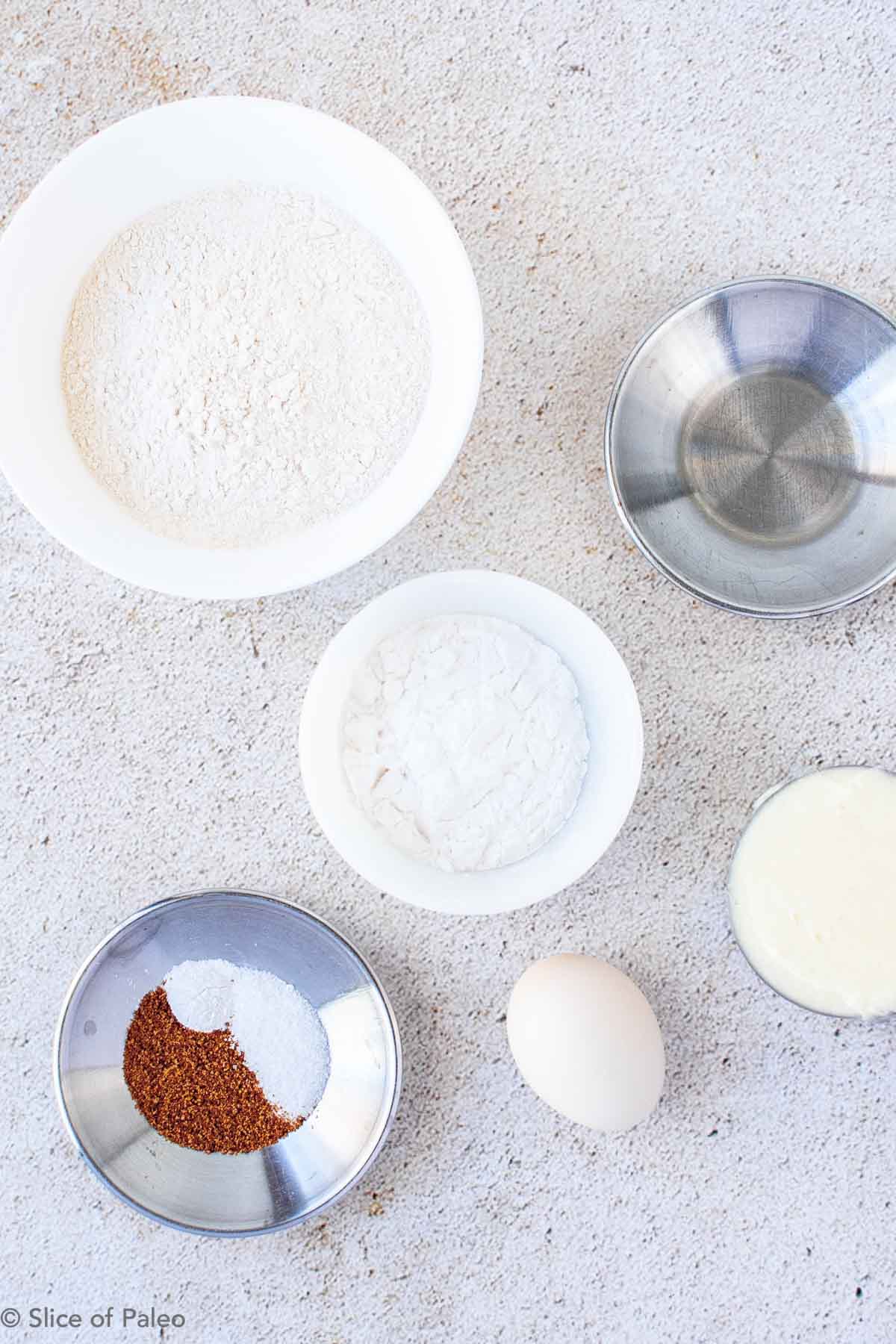
First you'll put your dry ingredients in a food process. You can also do this by hand in a bowl by stirring in all the ingredients. If using a food processor, gently pulse the dry ingredients just a couple times to combine.
Add the shortening and pulse a few more times until the flours and shortening are combined. The dough may look crumbly at this point. If your ingredients are in a bowl, break up the shortening with your fingers, a pastry cutter, or a fork.
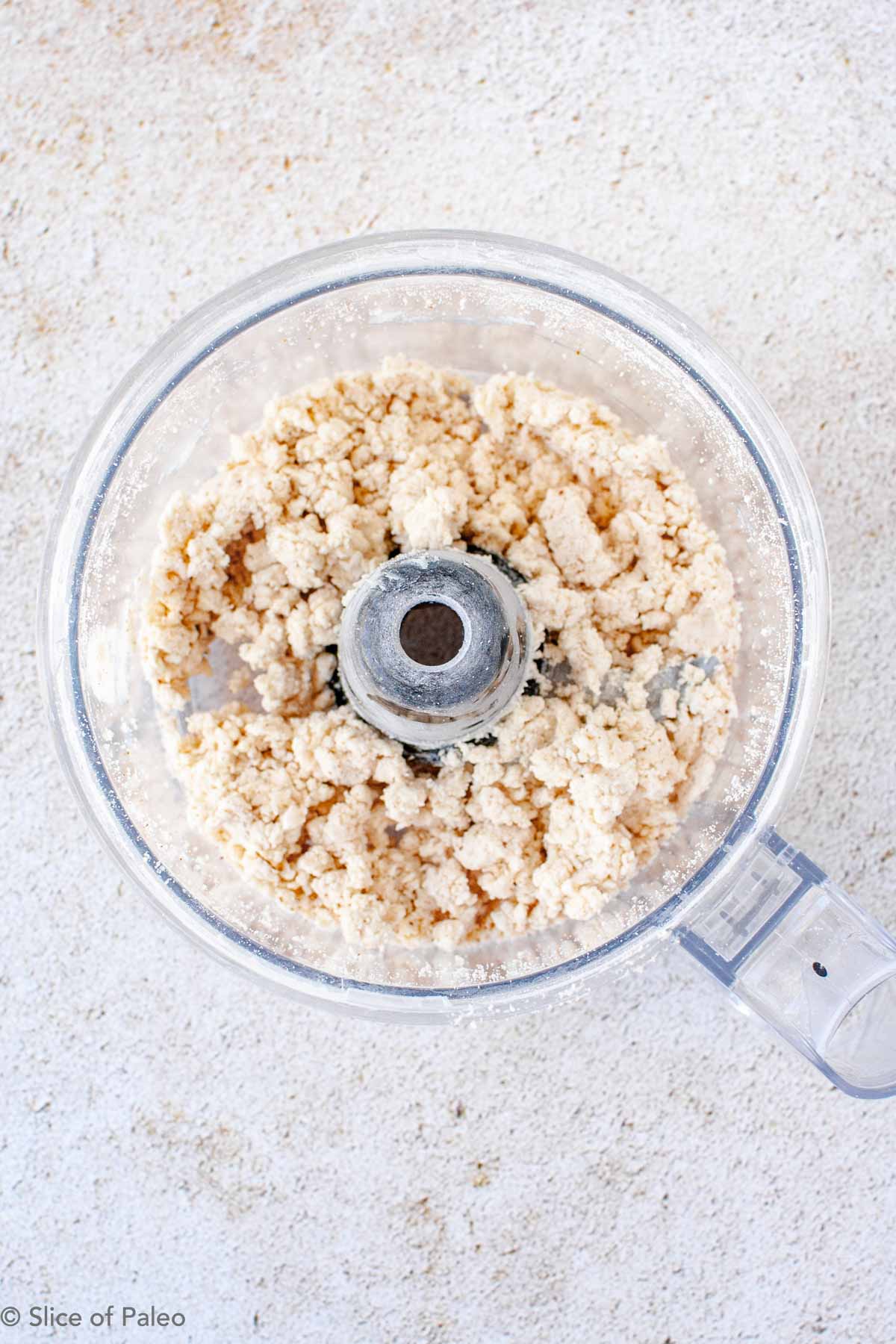
Add the egg and apple cider vinegar and pulse (or stir if using a bowl) a few more times until combined. The dough should start coming together at this point.
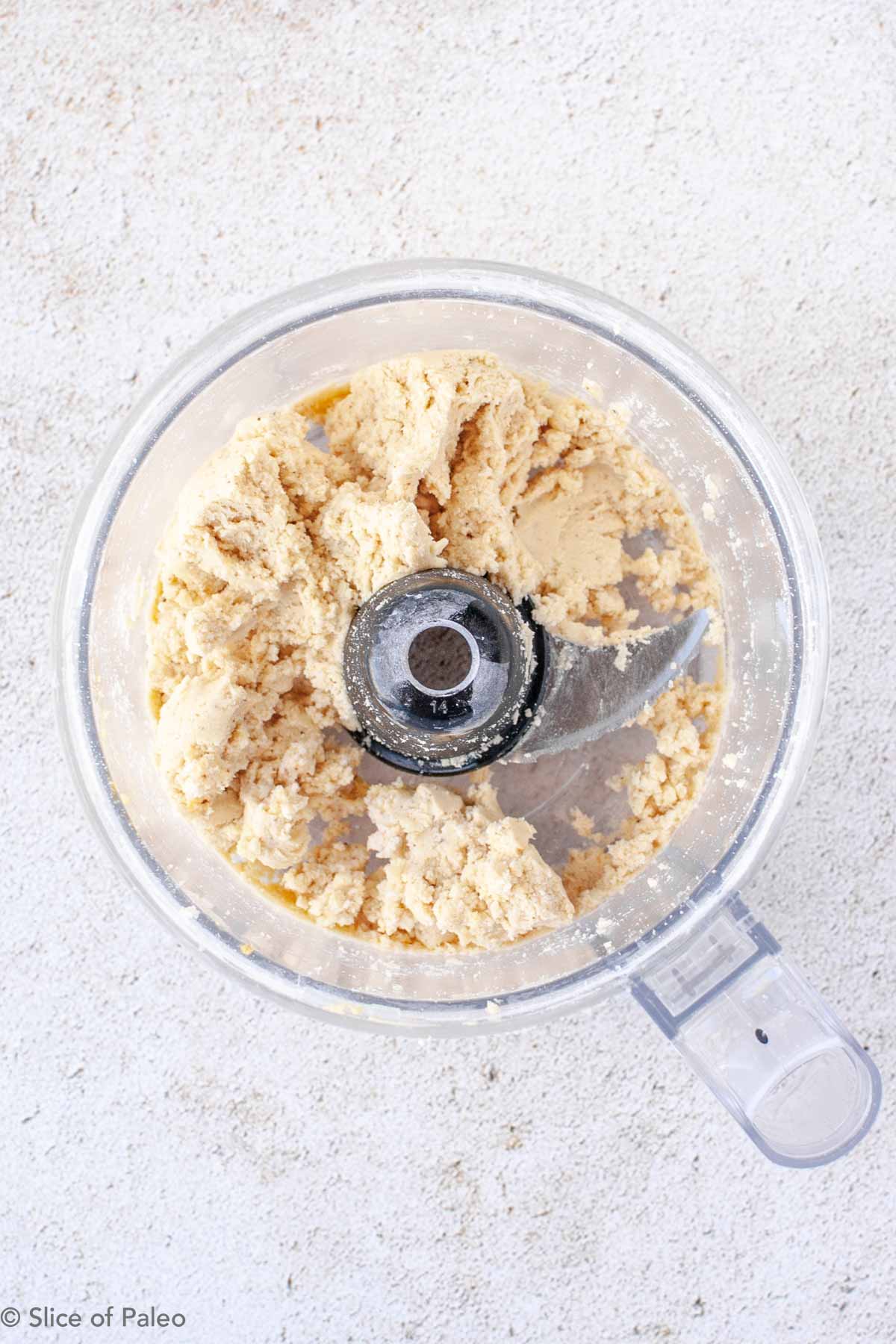
To ensure the dough is not too crumbly, add cold water 1 tablespoon at a time. This typically requires no more than 2 tablespoons. The dough may feel a little wet, more than with a regular pie crust. But that it fine as cassava flour requires a lot of moisture.
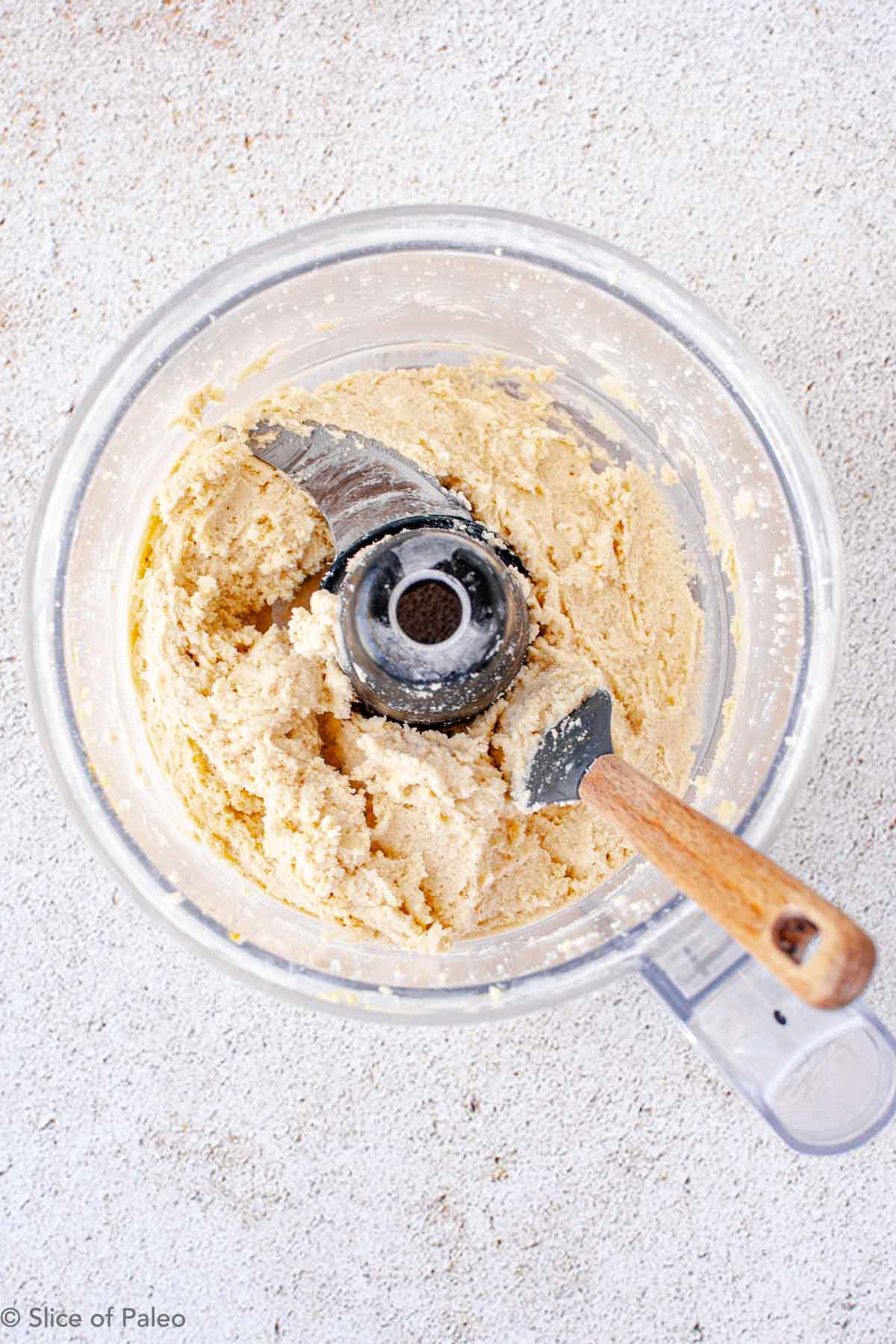
Prepare your surface by laying down a piece of parchment paper. Add some cassava flour to the parchment and spread it out with your hands. Scrape the dough out of the food processor or bowl and place it on the parchment. With flour on your hands, mold the dough into a ball.
Double the Recipe for a Top Crust
Please note that if you need a top and bottom crust, you can hit the 2x button on the recipe to double it. With two crusts, you'll break the dough ball into two pieces. If you plan to use one of the balls for the top crust, wrap it well in plastic wrap. Place the wrapped dough ball in the refrigerator until it will be used. Prior to rolling it out, remove from the refrigerator and let sit at room temperature so it becomes pliable again. When it comes time to add the top crust, follow the same directions for rolling it out. Then carefully and gently flip the parchment over the top of your pie and tuck in the edges of the top crust.
Rolling the Dough
To roll the dough ball, place it on the floured parchment. Add another piece of parchment over the top. Start rolling out the dough between the sheets of parchment, creating a circle. Roll out the circle so it has a 1-2 inch overhang. If the edges are cracking, you can rework the dough and mend it together around the edges to create a nice even edge.
After the dough is sufficiently rolled out, carefully remove the top piece of parchment. Gently flip the dough over the pie pan. The dough is quite fragile without the gluten, so you'll need to work with care. Gently pull off the other parchment paper and press the dough into the pan. Take the dough that hangs over the edges and roll to create the edge. If pieces of dough have broken off, take the scraps and roll them into a tube like shape, then add it to the rim and press down to connect it to the rest of the pie crust. Once you have excess dough all around the rim, pinch around the edges with your thumb and forefinger to create a wavy fluted pattern. I personally like it looking more rustic than perfect.
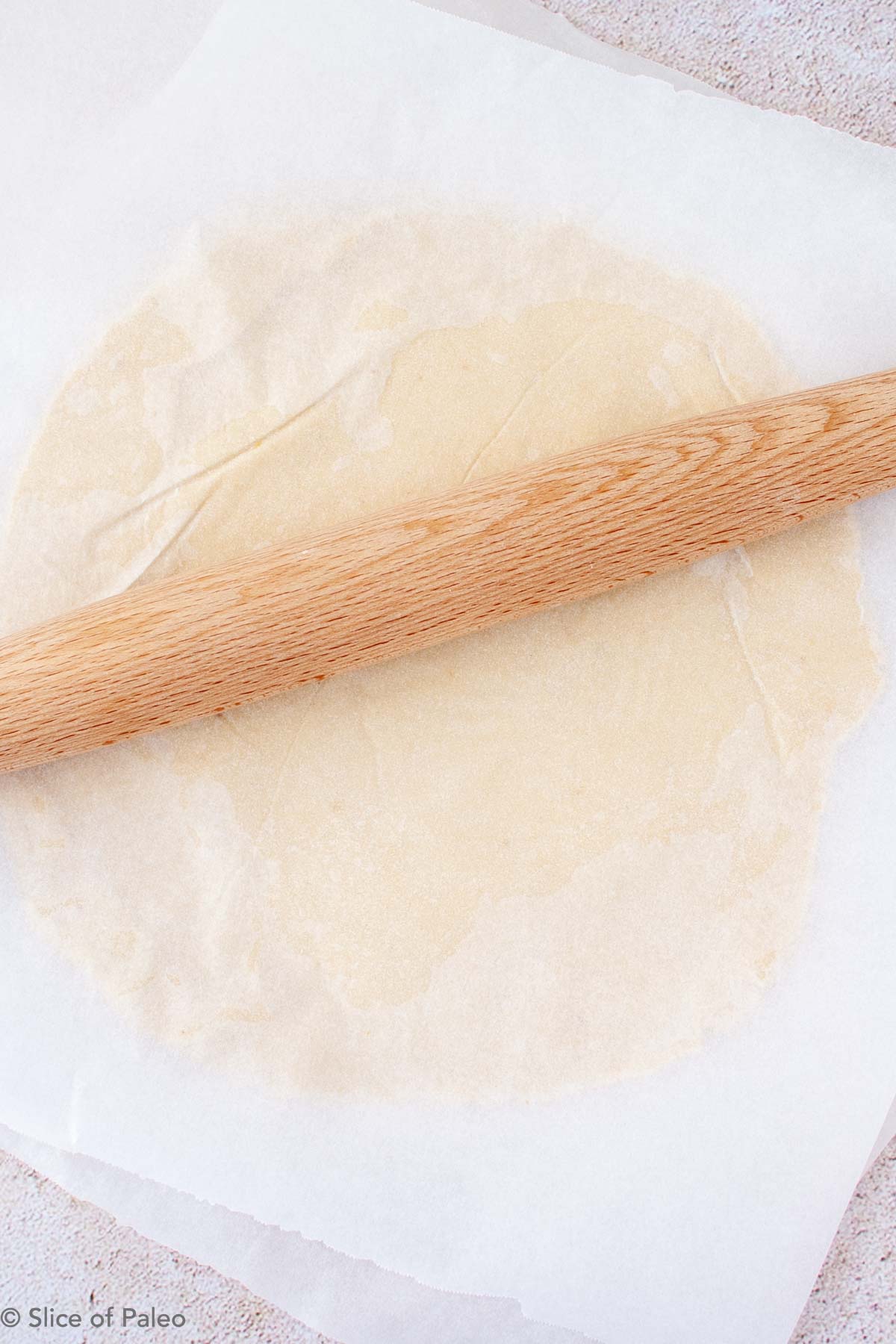
When the crust is in place, break an egg and whisk with a little nut milk or water to create an egg wash. Lightly brush the egg wash around the rim (and the whole pie crust if you prefer). Place the crust in the refrigerator for a minimum of 30 minutes (and not more than 24 hours). Preheat the oven to 350 degrees. To partially bake for a pie that will require more baking (such as pumpkin or a quiche), bake the crust for 15 minutes. To fully bake for a pie that does not require further baking, bake the crust for 30-35 minutes.
Finish the pie according to your pie directions. Whether you're making sweet or savory, this flaky crust will enhance any pie. Enjoy!
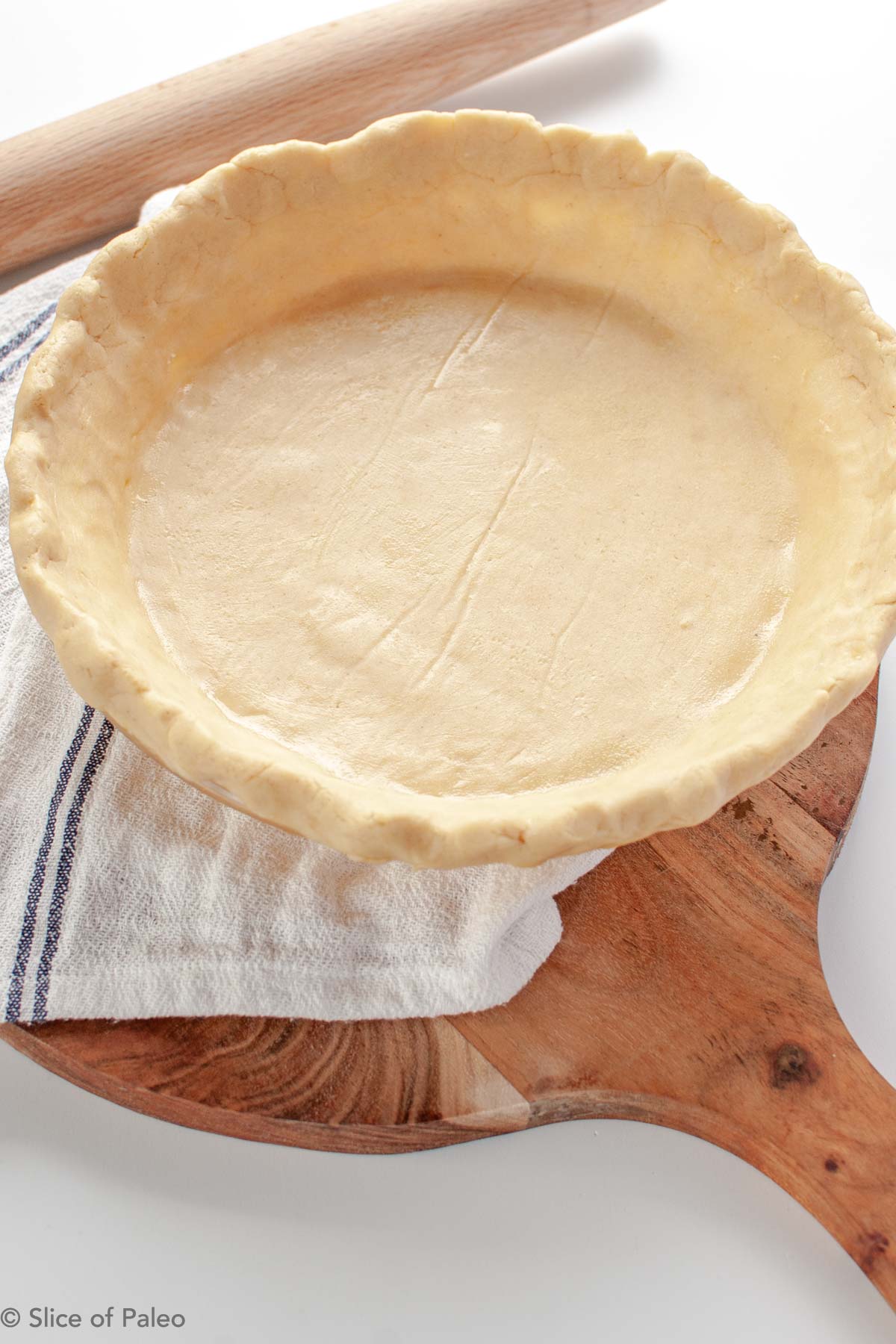
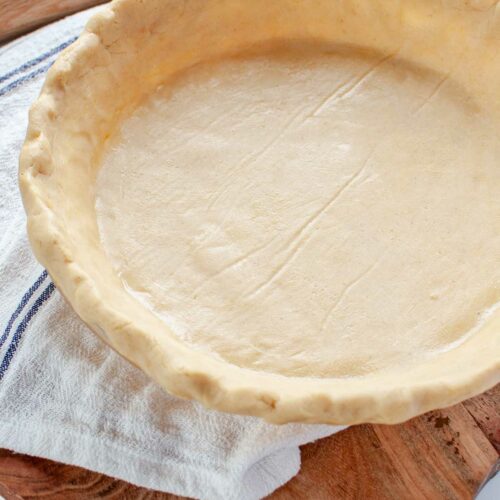
Paleo Pie Crust with Cassava Flour
Equipment
- 1 8-9" pie pan
- 1 food processor optional
Ingredients
- 3/4 cups cassava flour
- 1/4 cup tapioca flour
- 1/2 tsp salt
- 1/4 tsp baking powder
- 1 tsp coconut sugar eliminate for a savory pie
- 1/2 cup sustainable palm shortening (or lard) this recipe was made with Spectrum
- 1 egg
- 1/2 tsp apple cider vinegar
- 2 tbsp water
Instructions
- If you need a top crust for your pie, simply double the recipe (hit the 2x button).
- Add cassava flour, tapioca flour, salt, baking powder, and coconut sugar to a food processor. (You can eliminate the coconut sugar if crust is for a savory pie.) Gently and quickly pulse a couple times to combine. You can also simply combine the ingredients in a bowl if you don't have a food processor.
- Add palm shortening and pulse several more times so that the flour and shortening combine. The shortening will be in small pea sized pieces and the dough will look crumbly at this stage. (Or if using a bowl, break up the shortening into the flour using your fingers, a pastry cutter, or a fork.)
- Add eggs and apple cider vinegar, then pulse a few more times until combined. Add water 1 tablespoon at a time until the dough just comes together and isn't crumbly. The dough will likely be more moist than a regular pie crust. (Simply stir with a spoon until combined if using a bowl.)
- Lay down a piece of parchment and sprinkle some cassava flour on the parchment. Remove the dough from the food processor or bowl and place on the floured parchment. Roll the dough around just so it comes together in a ball. *If you've doubled the recipe, divide the ball into two pieces, making the bottom crust dough ball slightly bigger than the other. Wrap the smaller ball in plastic wrap. If using right away, keep on the counter at room temperature. If using at a later time, place in the refrigerator, then remove and let sit on counter at room temperature so it becomes pliable again.
- Take the dough ball for the bottom crust and place it on the parchment (you may need to add more cassava flour if the parchment is sticky). Add another piece of parchment to the top and roll out the dough between the parchment sheets. Keep rolling into a circle until it is slightly larger than the pie pan. If the edges crack, mend them together using your hands.
- Remove the top piece of the parchment and gently flip over the dough onto the pie pan. Carefully peel back the parchment and push the dough down into the pie pan, lifting the edges of the dough as you push it down around the pan. The dough is delicate, so if it cracks and breaks, simply mend it back together using your fingers. Extra pieces of dough can be used to seal any cracks or holes.
- Roll up the crust that is hanging over the edge and pinch together to create a wavy pattern. If there are excess scraps that broke off the edge, roll these scraps into tube shapes and place the pieces around the rim of the pie pan, mending them together with the sides of the crust. Then pinch together the dough on the rim to continue the wavy pattern.
- Place pie pan with bottom crust in the refrigerator and refrigerate for 30 minutes (and up to 24 hours).
- Finish per your pie directions. If your pie requires a top crust, roll out the other half of the dough ball in the same way as the bottom crust. Carefully lay the crust over the filling and tuck in the edges.*Note that to ensure the bottom crust is not soggy, blind baking is recommended. Preheat the oven to 350°F degrees and partially bake the bottom crust for 15 minutes prior to adding filling and the top crust.To fully bake a bottom crust for a pie that does not require additional baking, bake for 30-35 minutes.